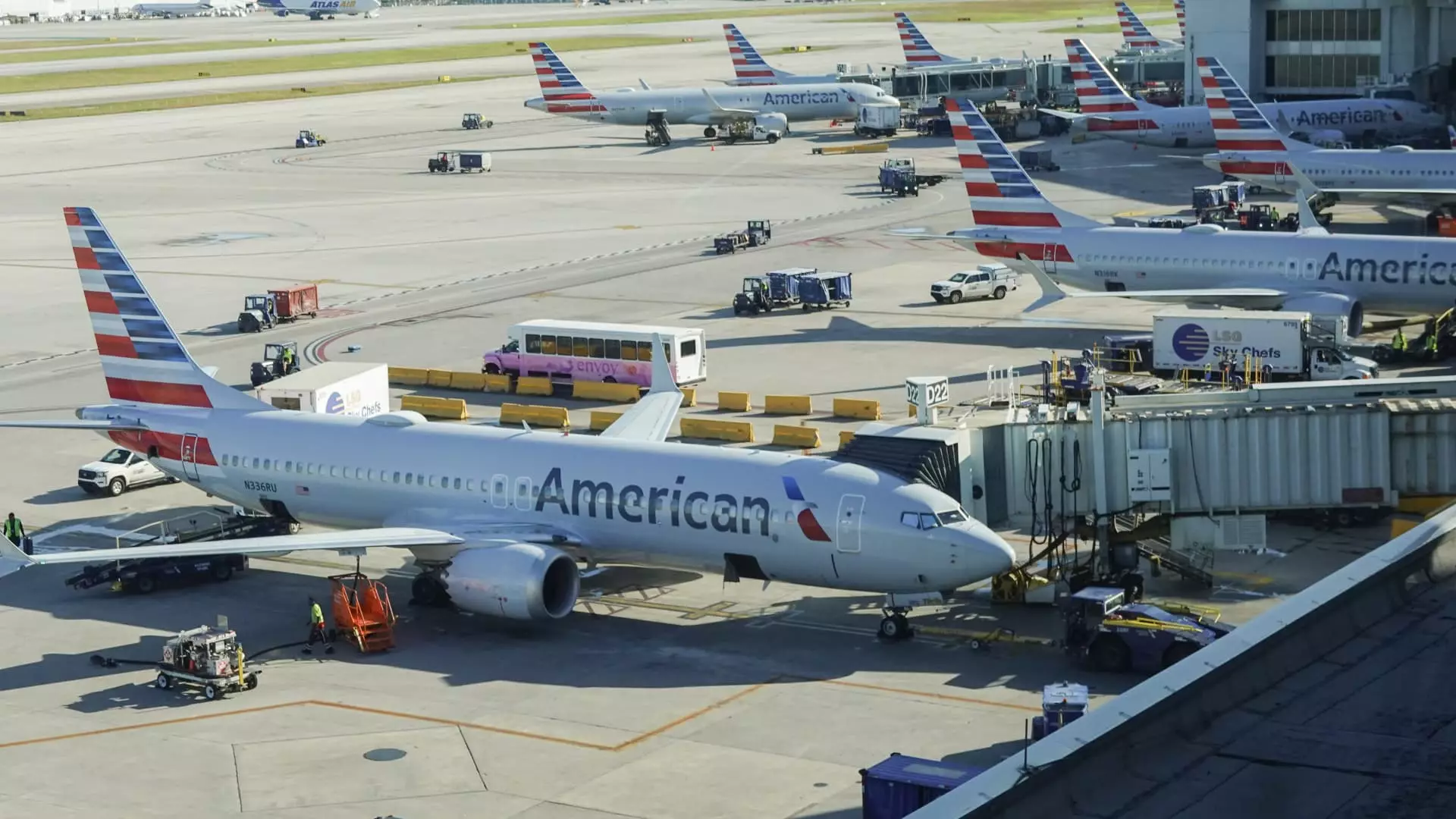In a surprising turn of events this past Tuesday morning, American Airlines found itself in the spotlight after grounding its flights across the United States due to a technical issue. This disruption coincided with what is expected to be a peak travel season, as millions of Americans take to the skies for the holidays. The ramifications of such a setback, even for a short duration, can aggravate both travelers and the airline industry at large, particularly during a time of significant passenger demand.
By 7:55 a.m. ET, the airline lifted the ground stop that had lasted less than an hour, with a spokesperson assuring the media that the problem was resolved swiftly. The issue arose from a platform used by a vendor linked to vital operational data, including an aircraft’s weight and balance—information crucial for flight safety and compliance. The prompt resolution is commendable, as it minimized the potential fallout of the situation. American Airlines publicly extended its apologies to passengers affected by the disturbance, acknowledging the chaos such incidents can sow in travel plans.
The Federal Aviation Administration (FAA) played a critical role in this incident, as American Airlines proactively requested the ground stop. This highlight brings to light an essential safety procedure within the aviation industry designed to prevent further complications at destination airports. By holding flights at their departure points, airlines effectively manage the flow of air traffic, preventing overwhelmed airports from becoming chaotic and ensuring safety and order—a crucial aspect of flight operations when technical or weather-related challenges arise.
The ground stop experienced by American Airlines underscores the fragility of the technology systems underpinning airline operations. Recently, heightened scrutiny around such systems has emerged, particularly following chaotic travel seasons marked by mass flight cancellations. Notably, the previous holiday season saw Southwest Airlines grappling with a substantial operational failure, emphasizing how a lack of resilience in technology can lead to devastating consequences for travelers. Similarly, Delta Airlines has faced challenges this summer due to system outages affecting their recovery efforts. Each instance serves as a reminder of the importance of maintaining robust technological infrastructures.
The Bigger Picture
While American Airlines did not report cancellations linked to this incident, and despite the quick resolution, the underlying concerns regarding technology and operational protocols in airlines persist. The travel industry is at a crossroads where demand continues to escalate, yet technological vulnerabilities remain prominent. As airlines gear up for accommodating more passengers during holiday seasons, they must invest in and prioritize technological resilience to avert similar incidents in the future. Failure to do so could diminish customer trust and satisfaction, severely impacting their bottom line.
While the swift resolution of the American Airlines ground stop incident was commendable, it served as a critical reminder of the aviation industry’s reliance on technology. As we move forward, it is imperative for airlines to bolster their technological systems to ensure passenger safety and operational efficiency. The stakes are high, particularly during peak travel periods, and the onus lies with the airlines to create a seamless experience for travelers navigating through an increasingly complex aviation landscape.


Leave a Reply